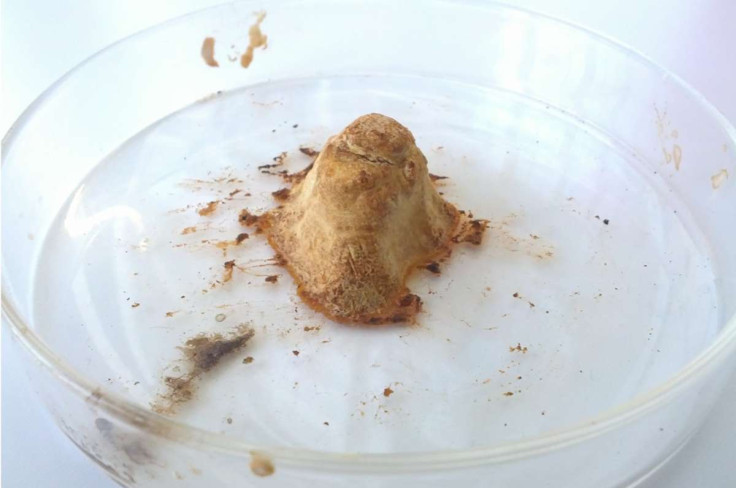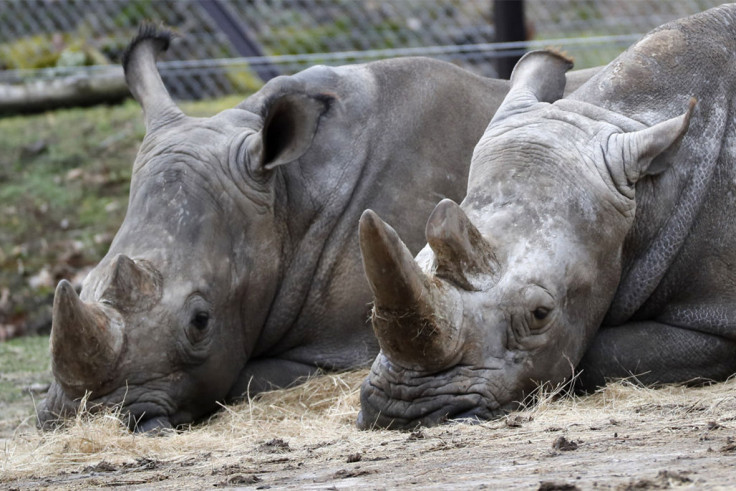Conservationists take note: 3D printing rhino horn won't increase poaching
Pembient wants to turn rhino horn from a rare commodity into an abundant bioplastic within the next five years.
Approximately one month ago, poachers surreptitiously killed a young white rhino named Vince, who was living at the Thoiry Zoo on the outskirts of Paris. They did this so they could saw off Vince's horns – although, they were only able to abscond with one of them. Presumably, the poachers risked capture and imprisonment in the hope of selling it for a tidy profit.
In response to the incident, zoos across Europe immediately beefed up their security. Dvur Kralove Zoo, in the Czech Republic, even had its rhinos dehorned – a painless procedure akin to trimming what is essentially a giant fingernail. These events underscored that Africa's ongoing rhino poaching crisis has finally arrived on Western shores.
Lost, however, in all the gloomy imagery, was some good news. The growth rate in pan-African rhino poaching mortalities fell from an average of 46% during 2010-2014, to 1% in 2015. Furthermore, in South Africa, home to the majority of rhinos, the number poached declined that year for the first time in almost a decade. More amazingly, this decrease occurred even though the country arrested 18% fewer poachers than it did the previous year. Clearly, 2015 marked something of a breakpoint in the poaching crisis.
That year was also a significant for my company, Pembient. That was the year we announced our intention to biofabricate rhino horn. We began by synthesizing a powder from recombinant rhino keratins produced using genetically engineered yeast. We did this because pulverised rhino horn was purportedly in demand in China and Vietnam as a health tonic.
Thanks to the work of investigators like Karl Ammann and Yufang Gao, we quickly realised artisans and collectors prized rhino horn for its unique structure – it being the only animal horn composed entirely of keratin, and lacking a bony core.

We came to understand that artisans carved large, seamless objects (like cups, handles and bracelets) from whole rhino horn. Such objects were impossible to reproduce with any other type of horn. This fact explained why a sizeable artefact seemingly made of keratin commanded a monetary premium over a similar mass of powder. Additionally, it comported with the observation that smugglers moved rhino horn out of Africa mostly intact. As a result, we switched our research and development efforts, first to 3D printing our own powder into solids and, later, to exploring ways of tissue engineering horn.
Unfortunately, no sooner had we announced our intention to biofabricate rhino horn, we were beset by conservation organisations. They claimed the sky was falling and that we were the cause. According to them, we would destigmatise rhino horn, stimulate demand for the substance and facilitate its laundering. In short, we would exacerbate the poaching crisis. Nevertheless, their worries seemed baseless to us.
From our perspective, rhino horn's uniqueness had led it to become a store of value like cash or gold. Worse, the illegal market in rhino horn was apparently in the midst of a speculative bubble. As Mark Twain reportedly once said: Buy land, they're not making it anymore.

Rhino horn collectors were now ''banking on extinction''. Or, to put it another way, the more rhinos became imperilled, the richer the collectors got.
The example of Samuel Curtis Upham – a contemporary of Twain's – provided a glimpse at a way out of the madness. Upham sold ''perfect facsimiles'' of Confederate money throughout the American Civil War. Union soldiers, merchants and entrepreneurs bought these cheap copies for shopping sprees in the South. Within a year-and-a-half of the appearance of Upham's facsimiles, the value of Confederate paper money had fallen by 90%. Importantly, his actions did not confer legitimacy onto the Confederacy, nor broaden the acceptability of its currency. It also didn't stimulate demand for Confederate banknotes, or lead to authentic Confederate bills being passed off as fakes.
Several months have passed since our initial announcement, yet opposition to our initiative persists. Despite the legal, technical and social hurdles we face, we remain committed to transitioning rhino horn from a rare commodity to an abundant bioplastic within the next five years. Moreover, we aspire to proceed in collaboration with conservation organisations and under the supervision of regulators.
In the wake of Vince the rhino's death, it is right to grieve, protest and demand action. What is less clear is if it is right to double down on the ineffective strategies of the past to the exclusion of all other possibilities. Whatever one thinks of the merits of biofabricated rhino horn, having the option to deploy it is invaluable. Conservation organisations actively thwarting its mere development should be so reminded.
Matthew Markus is co-founder and CEO of Pembient
© Copyright IBTimes 2025. All rights reserved.





















